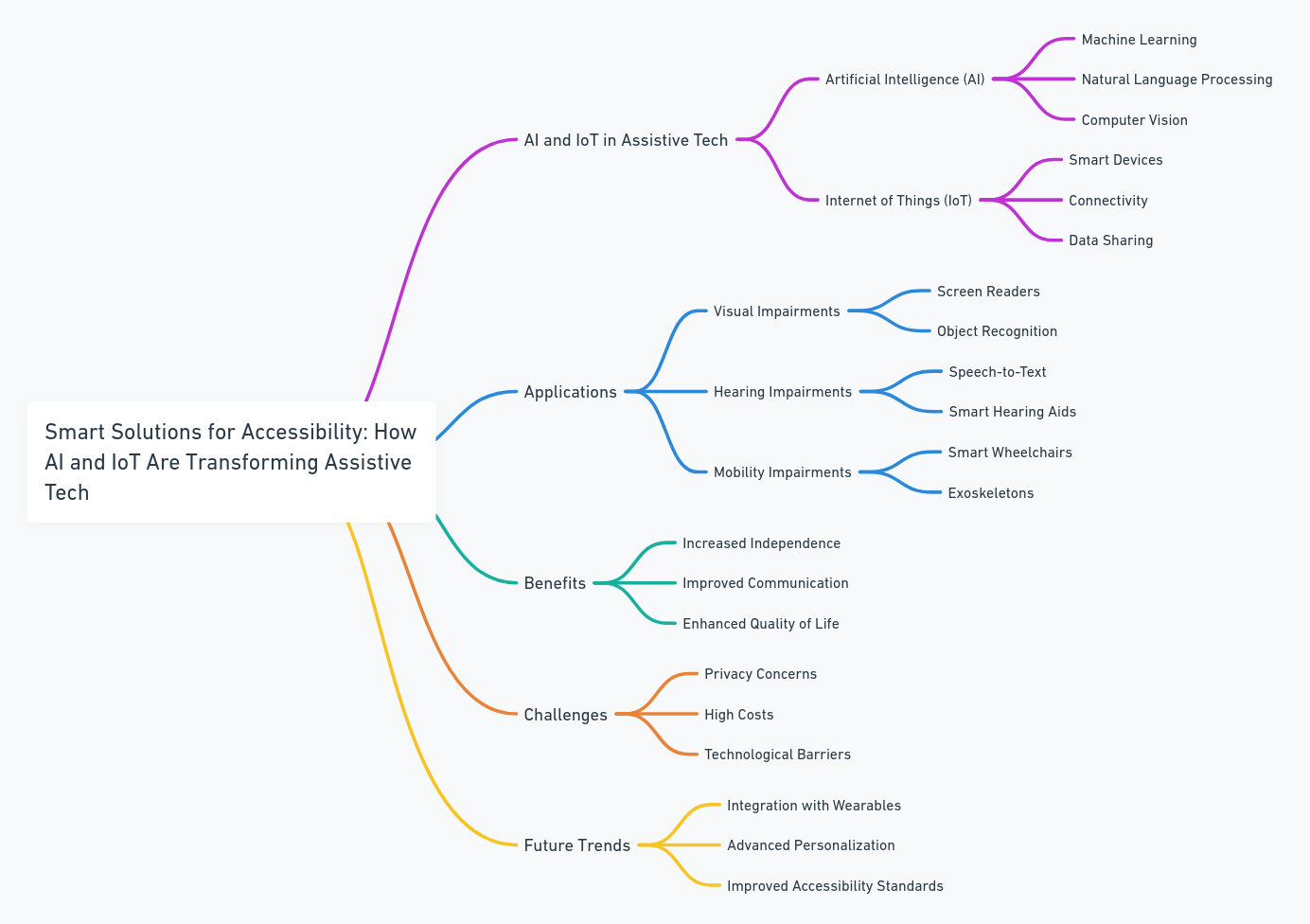Smart Solutions for Accessibility: How AI and IoT Are Transforming Assistive Tech
2024-05-28 | By Orcam Staff

The Revolution of Assistive Technology: AI and IoT at the Forefront
Imagine a world where a visually impaired person can read any book they want, thanks to AI-driven text-to-speech technology. This is not a distant future but our present reality, driven by the convergence of Artificial Intelligence (AI) and the Internet of Things (IoT). The world of assistive technology is undergoing a revolution, fundamentally reshaping accessibility solutions.
The Intersection of AI, IoT, and Assistive Technology

The convergence of AI, IoT, and assistive technology is a game-changer. It's creating a new paradigm in the field of accessibility. AI and IoT are not just standalone technologies; they are powerful tools that, when combined, can create highly personalized and interconnected assistive technology solutions.
For instance, the AI-powered Seeing AI app by Microsoft narrates the world to visually impaired users. Another example is IoT-enabled smart home systems that allow users with mobility issues to control their environment with simple voice commands.
Defining Assistive Technology Solutions
Assistive technology solutions refer to any device, system, or design that improves the functional capabilities of individuals with disabilities. These solutions can range from simple adaptive equipment to complex assistive devices powered by AI and IoT.
The Role of AI in Personalizing Assistive Devices
AI is revolutionizing assistive technology by enabling personalization. Through machine learning, AI can adapt to the unique needs of each user. This results in assistive devices that are more intuitive, responsive, and effective.
IoT: Connecting Devices for Enhanced Accessibility
IoT plays a crucial role in enhancing the functionality of assistive devices. By connecting devices, IoT enables seamless data sharing and synchronization. This interconnectivity results in a more integrated and efficient assistive technology experience.
Advancements in Adaptive Equipment Through AI and IoT
AI and IoT are driving significant advancements in adaptive equipment. These technologies are enhancing the functionality and adaptability of assistive devices.
Here are some key advancements:
- AI-powered predictive text and voice recognition
- IoT-enabled remote monitoring and control
Predictive Text and Voice Recognition: A Leap Forward
Predictive text and voice recognition are two AI-driven features that have revolutionized adaptive equipment. These features enable users to communicate more effectively and efficiently, providing a more personalized and intuitive user experience.
Remote Monitoring and Control: The IoT Advantage
IoT has brought about a significant shift in how assistive devices are used and managed. With IoT, users can remotely monitor and control their devices. This not only enhances convenience but also empowers users by giving them more control over their assistive technology.
Breakthroughs in Assistive Technology for Reading

Assistive technology for reading has seen significant advancements, thanks to AI and IoT. These technologies have made reading more accessible for individuals with visual impairments and learning disabilities.
Text-to-Speech and Real-Time Translation Tools
Text-to-speech and real-time translation tools are two major breakthroughs in assistive technology for reading. These tools have not only made reading more accessible but also transformed the way individuals with disabilities interact with written content. They have opened up a world of possibilities, breaking down language barriers and making information more accessible.
The Future of Accessibility: Trends and Challenges

The future of accessibility is promising, with AI and IoT leading the way. These technologies are set to revolutionize assistive technology solutions, making them more personalized, efficient, and user-friendly. However, the journey is not without challenges.
- Ensuring data privacy and security
- Addressing ethical considerations
- Ensuring user-centric design
- Overcoming technological limitations
Ethical Considerations and User-Centric Design
Ethical considerations are paramount in the development of assistive technology solutions. These considerations include ensuring data privacy and security, and avoiding bias in AI algorithms. Moreover, a user-centric design approach is crucial to ensure that the technology truly meets the needs of its users.
The Role of Government and Private Sectors in Advancing Assistive Tech
Both the government and private sectors play a significant role in advancing assistive technology. Their roles include providing funding, setting regulations, and fostering innovation. Collaboration between these sectors can accelerate the development and adoption of effective assistive technology solutions.
Conclusion: Embracing Inclusivity Through Technology
The integration of AI and IoT in assistive technology solutions is a significant stride towards inclusivity. These advancements are transforming the lives of individuals with disabilities, enabling them to lead more independent and fulfilling lives. Stay tuned to our blog for more insights into the future of assistive technology and how it can transform lives.



